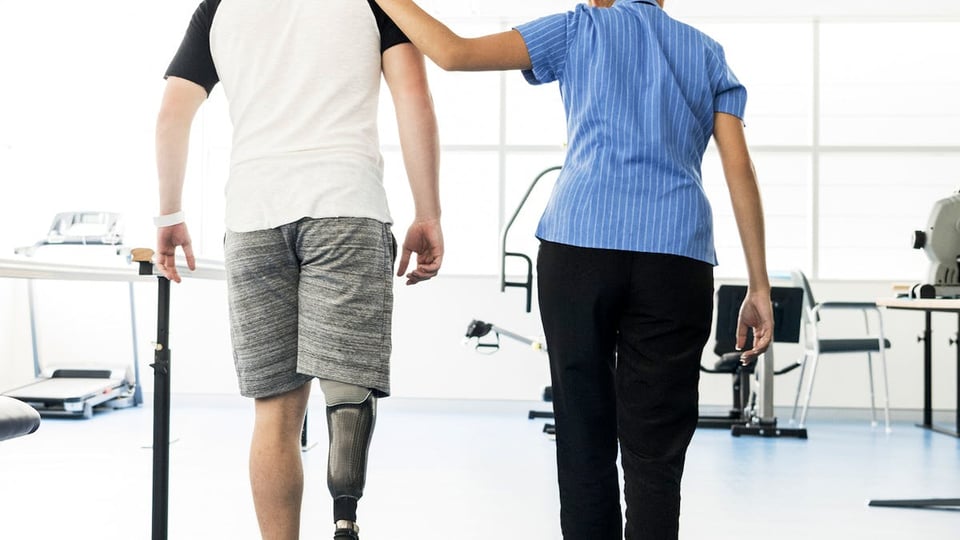Transfemoral and Transtibial Amputee
Brandi Singleton, PT, DPT, CCI
Includes all course content in digital format
Prerequisites Required
Description
More than 75,000 lower extremity amputations are performed in the United States each year. Many lower extremity amputees will have the potential to regain the ability to walk functional distances with the training of rehabilitation professionals. 50% of amputees report fear of falling and have at least one fall per year.
This course will provide therapists with the tools needed to maximize our patient’s potential prior to prosthetic use and promote functional use of prosthetics to allow them to return to optimal levels of function. Therapists play an integral role from day one following an amputation to the day a patient returns to home, community, and work settings. With the proper training and education from qualified therapy professionals utilizing evidence-based practice and effective outcome measures, these patients can reach optimal levels of independence and safety. These outcomes will not only lead to a higher quality of life, but also reduce the risk of further injury and hospitalization.
Highlights
- Improve functional mobility in lower extremity amputees at various points in their rehabilitation journey
- Effectively reduce fall risk in patients with lower extremity amputation
- Utilize effective outcome measures to determine an accurate baseline and to track progression
Learning Objectives
- Examine appropriate assessment and treatment strategies for each phase of amputee rehabilitation.
- Analyze two issues that can contribute to increased falls in a lower extremity amputee.
- Apply two outcome measures that can be utilized to assess functional level of amputees.
Course Content
| Transfemoral and Transtibial Amputee | SCORM Package | ||
| Next Steps | Module |
- Lower Extremity Amputee Classification
- Identify prosthetic candidates vs. non-prosthetic candidates
- Identify appropriate goals based on classification levels
- Rehabilitation and Treatment Focus for the Lower Extremity Amputee
- Range of motion
- Strengthening
- Self-care
- Prosthetic training
- Fall Prevention for the Lower Extremity Amputee
- Identifying Risk Factors for falls
- Improving safety and independence of the lower extremityamputee
- Home assessment/modification
- Amputee Outcome Measures
- Standardized assessments for lower extremity amputees atvarious functional levels
- Post-discharge resources and support
Dr. Brandi Singleton, PT, DPT, CCI is an experienced physical therapist with expertise in geriatric physical therapy, fall prevention, and home safety assessments. She earned her Bachelor's degree in Biology at Winthrop University in Rock Hill, SC and Doctor of Physical Therapy degree at Armstrong State University, which is now the Armstrong Campus of Georgia Southern University, in Savannah, GA.
Dr. Singleton has been a seminar instructor since 2017; with courses highlighting various topics of interest for rehabilitation professionals. Brandi is a proud member of the American Physical Therapy Association (APTA) and is also an APTA Credentialed Clinical Instructor, as well as a Certified Fall Prevention Specialist. She was also a past presenter at the APTA Combined Sections Meeting (CSM) National Conference. She is passionate about providing effective treatment strategies with special emphasis on demystifying myths relating to age-related functional deficits through evidence-based practice and functional outcome measures.
DISCLOSURES
FINANCIAL: Brandi Singleton is compensated by Summit as an instructor.
NONFINANCIAL: Brandi Singleton has no non-financial relationships to disclose.
Click here to check accreditation for this course.